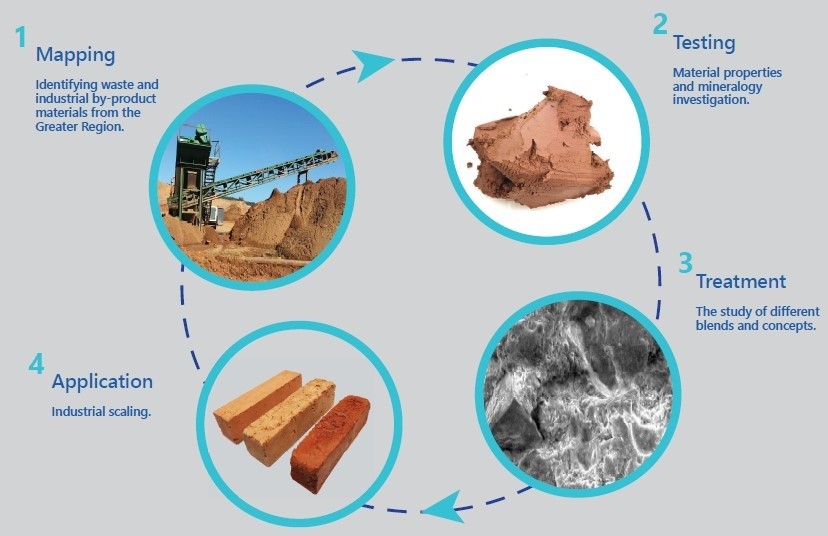Context
The reduction of the usage of Ordinary Portland Cement (OPC) in the construction industry has become an ambitious challenge and a key incentive to current political strategies, industries and research institutions alike. One of the main factors responsible for the unfavorable environmental impact of OPC are the high CO2 emissions linked to the cement clinker production processes among other. Nonetheless, the cement production volumes have constantly risen in the last decades and a decrease in demand is not expected any time soon. The increasing scarcity of raw materials for cement clinker production and the exploitation of known cementitious admixtures have imperatively stimulated the research on novel raw material strategies and binder technologies to assure the current and future demands for products based on cementitious materials.
Objectives
This research project aims at developing a combined solution for the following goals:
- Economic benefit for cement industry. There is a growing challenge in the cement industry and the research communities to develop new, durable and environmentally friendly concepts as an alternative to cement clinker. The reduction of clinker in cement allow economy on fuel consumption and also, “green politics” improve the image of the company, which attracts investors and customers.
- Development of new sources of raw materials. Currently, the main substitute materials to cement are blast furnace slags and fly ashes. However, their stocks are almost completely exhausted as the iron industry has been significantly slowed down, and the use of coal as a fuel has completely stopped in the Greater Region.
- Reduction of landfilled waste in Greater Region. There exist wide ranges of industrial by-products or waste materials in the Greater Region, which show very promising characteristics for revalorisation as potential partial cement substitute.
- Contribution to the Circular economy. Converting waste elements into goods is one of the principal ambitions of our and earlier generations and will be an essential part of future economy in Europe to minimize international dependency on raw materials and to build a “resource efficient” Europe.


